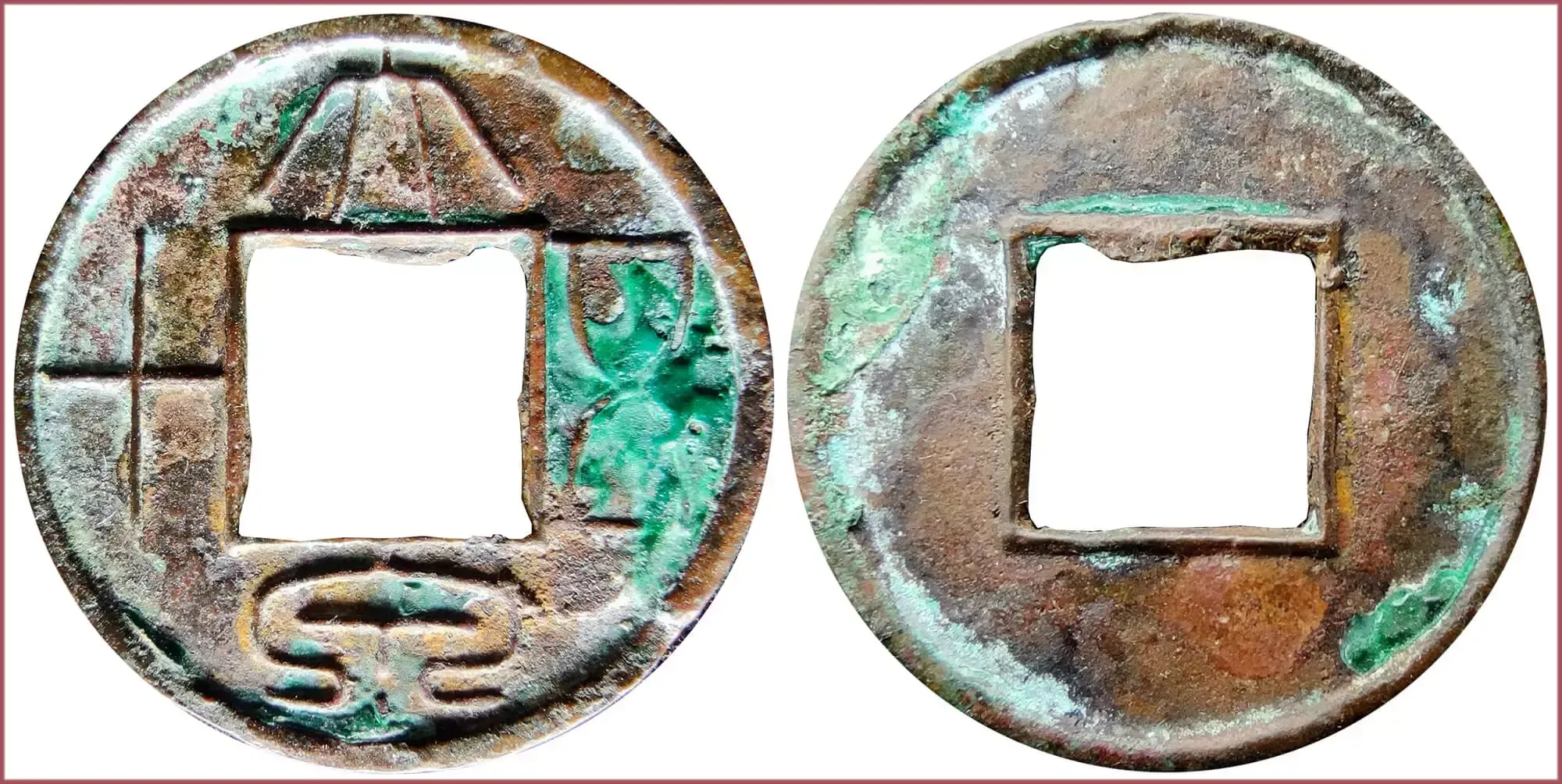ZHU: COIN OF ANCIENT CHINA
50 zhu (Daquan Wushi), 9-23 AD: Chinese Empire (Xin dynasty)
The Xin dynasty in Chinese historiography, was a short-lived Chinese imperial dynasty which lasted from 9 to 23 AD, established by the Wang Mang, who usurped the throne of the Emperor Ping of Han and the infant "crown prince" Liu Ying. The Xin dynasty ruled for over a decade before it was overthrown by rebels. After Wang's death, the Han dynasty was restored. Therefore, the Xin dynasty is often considered an interregnum period of the Han dynasty, dividing it into the Western Han (or "Former Han") and the Eastern Han (or "Later Han").
Ruler: Wang Mang — the founder and the only emperor of the short-lived Chinese Xin dynasty. Traditional Chinese historiography viewed Wang as a tyrant and usurper, while more recently, some historians have portrayed him as a visionary and selfless social reformer. During his reign was abolished slavery and 5 monetary reforms were carried out: introduced easier money while canceling the old ones.
Traditional Chinese uniface round coin with a square hole in the center.
Stylized hieroglyphs 大 泉 五 十 (right to left) read as "dà quán wǔ shí" /Daquan Wushi/ — an indication of equivalence with the fifty zhu coin.
- Bronze: 26 mm - 2.53 g
- Reference price: 10$
COIN ZHU — WHERE & WHEN (coins catalog: by names & emitents)
- ANCIENT CHINA (from the 2nd century BC to the 7th century AD): zhu (sometimes in numismatic catalogues the same coins are called either zhu or cash)
ZHU as coin name.
Zhu — ancient Chinese coin. Was issued for many centuries (from the 2nd century BC to the 7th century AD according to approximate data) of bronze or iron. As a rule zhu had a round shape with a square hole on center.
It was not possible to find clear information about the coin: there are conflicting data on the web. The earliest known coin of this denomination is dated to the middle of the 2nd century BC. But it is not known whether these are the first zhu. The most recent belong to the times of the Tang Empire establishment in 7th centuries.
There are different denominations: 3, 5, 10, 20, 30, 40, 50 zhu (invariably round coins with a square hole for stringing). We also know about large denominations — 500 and 5000 zhu (so-called knife coins with interspersed gold or gilding).
At the turn of the millennium, an incredible number of fakes, false coins appeared in circulation... Emperor Wang Mang undertook to save the situation, who carried out several monetary reforms designed to standardize the monetary system and bring it into order. The idea ended in failure and an even bigger mess. After Wang Mang's experiments (restoration of the use of long-forgotten cowrie shells, a wide variety of different coins) in the middle of the 1st century the issue of the familiar 5 zhu (wu zhu) coins is resumed. However, over a century and a half, their weight decreased so much that a 5 zhu coin became like a small ring without any inscriptions... Later, iron zhu appeared, twice as cheap as bronze ones. Zhu coins were gradually supplanted by qian (for a certain time they existed in parallel), which became the main coins of China for a long time.
It is interesting that many sources use the following phrase to denote coins of this denomination — "wu zhu cash coin". To be honest, I don't know how to interpret the combination into one essence of coin names that are different for me — zhu and cash...
However, Wikipedia reports the following — "Under the Western Han dynasty the ban liang cash coins of the earlier Qin dynasty were retained until a series of monetary reforms replaced them first with the San Zhu and then the Wu Zhu". That is, we are talking about several types of cash coins, including several varieties of zhu coins.
With the name of the zhu coin, everything is simple: in ancient China, the zhu was a unit of measurement of weight equal to 0.56 g. Coins with a denomination of 1 zhu had exactly this weight, while larger denominations only approximately corresponded to this value: 100 zhu weighed far less than 56 g...

